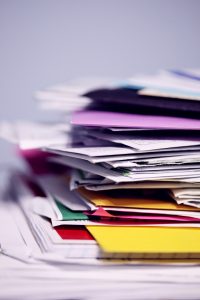Forex trading is a complex and dynamic market that involves trading different currency pairs. As a trader, it is essential to understand the correlation between different currency pairs to make informed trading decisions. Correlation is the statistical measure of how two currency pairs move together. Understanding the correlation between currency pairs can help traders to diversify their portfolios and minimize risk. In this article, we will discuss which forex pairs are most correlated.
Correlation is measured on a scale of -1 to +1, where -1 represents a negative correlation, +1 represents a positive correlation, and 0 represents no correlation. A positive correlation between two currency pairs means that they move in the same direction, while a negative correlation means that they move in opposite directions. A correlation of 0 means that there is no relationship between the two currency pairs.
EUR/USD and USD/CHF
The EUR/USD and USD/CHF currency pairs are known for their strong negative correlation. This correlation is due to the fact that the Swiss Franc (CHF) is often used as a safe-haven currency, while the Euro (EUR) is considered a riskier currency. When there is a risk event in the market, such as a global recession, traders tend to sell riskier currencies such as the Euro and buy safe-haven currencies like the Swiss Franc, leading to a negative correlation between these two currency pairs.
USD/JPY and Gold
The USD/JPY and Gold currency pairs are known for their negative correlation. This correlation is due to the fact that gold is often used as a safe-haven asset, while the Japanese Yen (JPY) is also considered a safe-haven currency. When there is uncertainty in the market, traders tend to sell riskier assets such as the USD/JPY and buy safe-haven assets like gold, leading to a negative correlation between these two currency pairs.
AUD/USD and Gold
The AUD/USD and Gold currency pairs are known for their positive correlation. This correlation is due to the fact that Australia is a major gold producer, and the Australian Dollar (AUD) is often used as a proxy for the gold price. When the price of gold rises, the AUD/USD tends to rise as well, leading to a positive correlation between these two currency pairs.
USD/CAD and Oil
The USD/CAD and Oil currency pairs are known for their negative correlation. This correlation is due to the fact that Canada is a major oil producer, and the Canadian Dollar (CAD) is often used as a proxy for the oil price. When the price of oil rises, the USD/CAD tends to fall as the Canadian Dollar strengthens, leading to a negative correlation between these two currency pairs.
EUR/GBP and GBP/USD
The EUR/GBP and GBP/USD currency pairs are known for their positive correlation. This correlation is due to the fact that both currency pairs involve the British Pound (GBP). When the GBP strengthens, both currency pairs tend to rise, leading to a positive correlation between these two currency pairs.
Conclusion
In conclusion, understanding the correlation between currency pairs is essential for successful forex trading. The currency pairs mentioned above are known for their strong correlations, and traders should keep these correlations in mind when making trading decisions. By diversifying their portfolios and minimizing risk, traders can increase their chances of success in the forex market.





